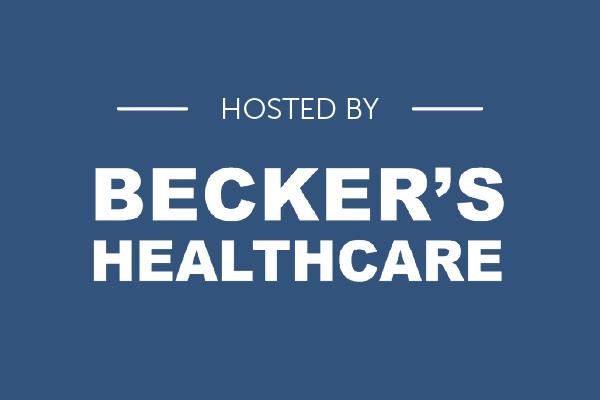
The Cost of Interruptions in Healthcare: How Communication Inefficiencies Undermine Clinician Productivity and Patient Care
In any healthcare setting, interruptions are more than just annoyances; they can have serious consequences. For clinicians, constant disruptions are not merely distractions—they directly impact patient care, contribute to professional burnout, and reduce overall productivity.
A recent survey on the 2024 State of Healthcare Collaboration conducted by TigerConnect and Becker’s Healthcare shed light on the communication challenges faced by healthcare professionals. The survey, which included responses from clinicians, nurses, and C-suite executives, revealed that 60% of respondents experience non-actionable interruptions during a typical shift, with nearly half reporting frequent disruptions. These interruptions not only fragment focus but also increase anxiety, forcing healthcare providers to expend additional effort determining which messages require immediate action. The survey also revealed that 86% of clinicians have to switch between communication systems, which can cause unnecessary interruptions to the clinician as they toggle between different systems.
This blog is part of an ongoing series exploring the inefficiencies in healthcare communication. We’ve been analyzing the systemic glitches, delays, and barriers that complicate the flow of information and hinder effective collaboration. Healthcare is a collaborative endeavor, requiring coordination across multiple departments and disciplines to move patients through the care continuum. Yet, many of the inefficiencies we encounter are not isolated incidents—they are part of a larger communication problem that affects the entire system.
The Impact of Non-Critical Alerts and Distractions

One of the most pervasive issues in healthcare today is the constant barrage of non-critical alerts and notifications, which often lack the actionable information clinicians need. Interruptions in healthcare pose a significant challenge, disrupting workflows and diluting the quality of care delivered to patients.
Imagine a nurse in the middle of administering medication or attending to a patient’s critical needs, only to be interrupted by an alert that offers no useful context or urgent information. Such distractions force nurses to shift focus, increasing the likelihood of delays and errors in treatment. These interruptions not only slow down essential workflows but also exacerbate stress and cognitive overload, contributing to burnout and diminishing the quality of patient care. In the TigerConnect-Becker’s survey, 58% of nurses reported encountering these non-contextual interruptions at least occasionally, and 36% said they experience them frequently.
The cumulative effect of these disruptions is significant. They not only slow down essential workflows but also increase cognitive load, leading to stress and burnout among healthcare staff. This fragmented focus compromises the quality of care, heightens the risk of medical errors, and ultimately impacts patient outcomes.
A Smarter Solution with TigerConnect
At TigerConnect, we recognize that communication inefficiencies are a critical challenge in modern healthcare—and addressing them requires a sophisticated, holistic approach. Our Clinical Collaboration Platform is designed to eliminate the unnecessary noise that often distracts healthcare teams from their primary focus: patient care.
By integrating with existing electronic health record (EHR) systems, the TigerConnect platform provides a single, secure communication hub that connects clinicians across departments. TigerConnect also integrates with many other existing clinical systems to unify communication and reduce interruptions caused by having to switch between multiple systems.
Key features such as TigerConnect Roles and Teams allow targeted, role-based messaging, ensuring that only relevant individuals receive critical alerts. This not only reduces the volume of interruptions but also ensures that essential information reaches the right people in a timely manner. For example, clinicians could utilize broadcast messaging to send a message to a code blue or rapid response team instead of overhead paging.
With built-in HIPAA compliance, TigerConnect allows clinicians to include actionable details in their messages, enabling faster decision-making and reducing the need for follow-up communications. In addition, the TigerConnect Alarm Management solution helps staff prioritize alerts, ensuring that only the most urgent and actionable notifications reach the appropriate team members. Through escalation pathways, actionable items are automatically directed to the right person, preventing unnecessary alerts from reaching an entire unit. For example, a patient call light notification can be routed through an escalation process to the appropriate nurse rather than ringing throughout the nursing station, reducing distractions and ensuring timely responses.
By consolidating alerts into a coherent, manageable stream, TigerConnect helps reduce cognitive overload for healthcare professionals. This focused approach allows clinicians to remain fully engaged with their patients, reducing the likelihood of errors and enhancing the overall quality of care.
Reducing Interruptions in Healthcare, Improving Outcomes

The constant interruptions in healthcare environments do more than just frustrate staff—they degrade the quality of patient care. Addressing this issue requires a shift toward smarter, more efficient communication tools. With TigerConnect, healthcare teams can reduce the noise, streamline communication, and ensure that only the most important alerts reach their intended recipients.
By minimizing distractions and ensuring that clinicians have access to vital information when they need it, TigerConnect is helping to create a more focused, efficient healthcare environment. The result? Healthcare professionals can perform at their best, and patients receive the attentive, high-quality care they deserve.
Featured Resources
Related Articles











